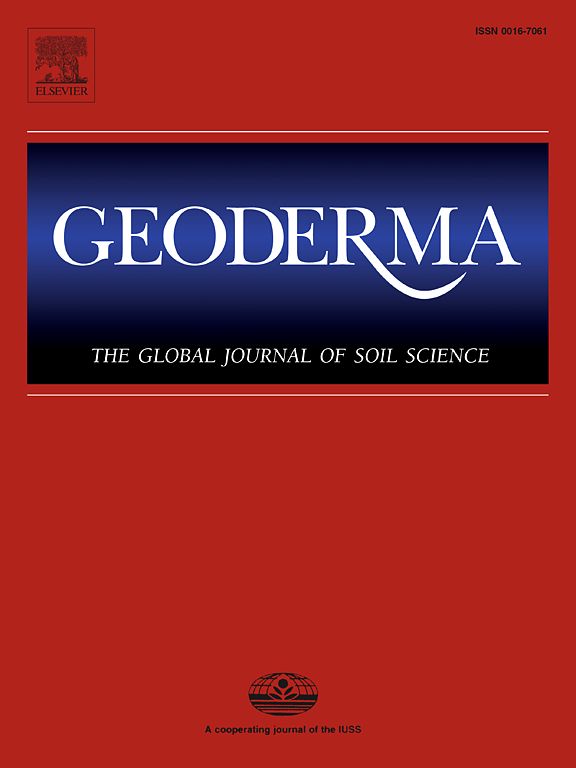利用集合学习方法从土壤基本特性预测冻土导热系数
IF 5.6
1区 农林科学
Q1 SOIL SCIENCE
引用次数: 0
摘要
导热性是了解冻土行为所需的重要属性之一。根据未冻结的水、冰、气体和土壤颗粒的比例,文献中有几种预测冻土导热系数的模型。本研究扩展了两种基于集合学习方法的模型,即随机森林(RF)模型和最小二乘提升(LSB)模型,用于估算冻土的导热系数。这些模型利用基本土壤特性作为输入参数,其中包括含水量、干密度、温度以及砾石、砂、粉土和粘土的比例,这些参数可以很容易地测量或确定。此外,我们还评估了七种广泛使用的导热模型,即冻土的传统模型。使用从文献中收集的 43 种不同质地土壤的 823 次测试数据,对 RF 和 LSB 模型以及传统模型进行了评估。结果表明,传统模型在用于不同类型的土壤方面有其优势和局限性。相比之下,所提出的基于集合学习方法的模型与传统模型相比具有更高的预测精度,并可适用于所有土壤类型和温度范围。此外,基于集合学习方法的模型估算结果可用于提供冻土的多维分析概率。本文章由计算机程序翻译,如有差异,请以英文原文为准。
Prediction of thermal conductivity of frozen soils from basic soil properties using ensemble learning methods
Thermal conductivity is one of the important properties required for understanding the frozen soils behavior. There are several models available in the literature for the prediction of thermal conductivity of frozen soils based on the proportions of unfrozen water, ice, gas, and soil particles. In this study, two ensemble learning methods-based models; namely, the Random Forest (RF) model and the Least Squares Boosting (LSB) model, are extended to estimate the thermal conductivity of frozen soils. These models utilize basic soil properties as input parameters that include water content, dry density, temperature, and fractions of gravel, sand, silt, and clay, can be measured easily, or determined. Additionally, seven widely used thermal conductivity models, referred to as the traditional models for frozen soils, were evaluated. Both the RF and LSB models, as well as the traditional models, were assessed using data of 823 tests derived from 43 soils with different textures that were gathered from the literature. The results highlight that the traditional models have their strengths and limitations in terms of their use for different types of soils. In contrast, the proposed ensemble learning methods-based models provide higher prediction accuracy compared to the traditional models and can be applied to all soil types and temperature ranges. Furthermore, estimation from the ensemble learning methods-based models can be used to provide probability of multi-dimensional analysis of frozen soils.
求助全文
通过发布文献求助,成功后即可免费获取论文全文。
去求助
来源期刊

Geoderma
农林科学-土壤科学
CiteScore
11.80
自引率
6.60%
发文量
597
审稿时长
58 days
期刊介绍:
Geoderma - the global journal of soil science - welcomes authors, readers and soil research from all parts of the world, encourages worldwide soil studies, and embraces all aspects of soil science and its associated pedagogy. The journal particularly welcomes interdisciplinary work focusing on dynamic soil processes and functions across space and time.
 求助内容:
求助内容: 应助结果提醒方式:
应助结果提醒方式:


